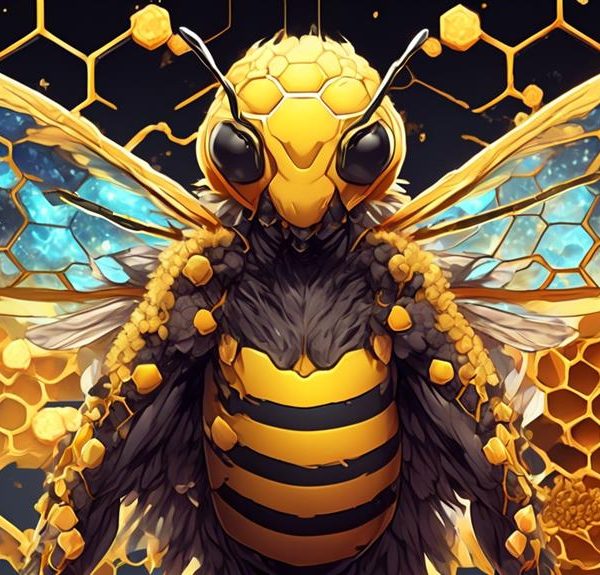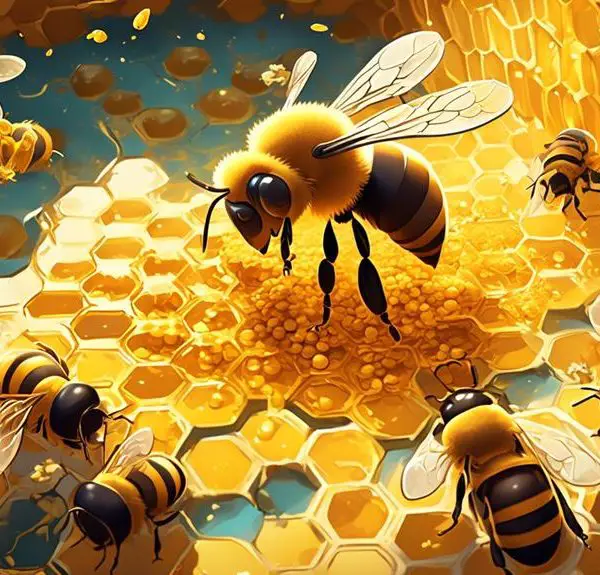Marvel at nature's unpredictability as we explore if a tiny bee can vanquish a formidable snake in an unlikely showdown.
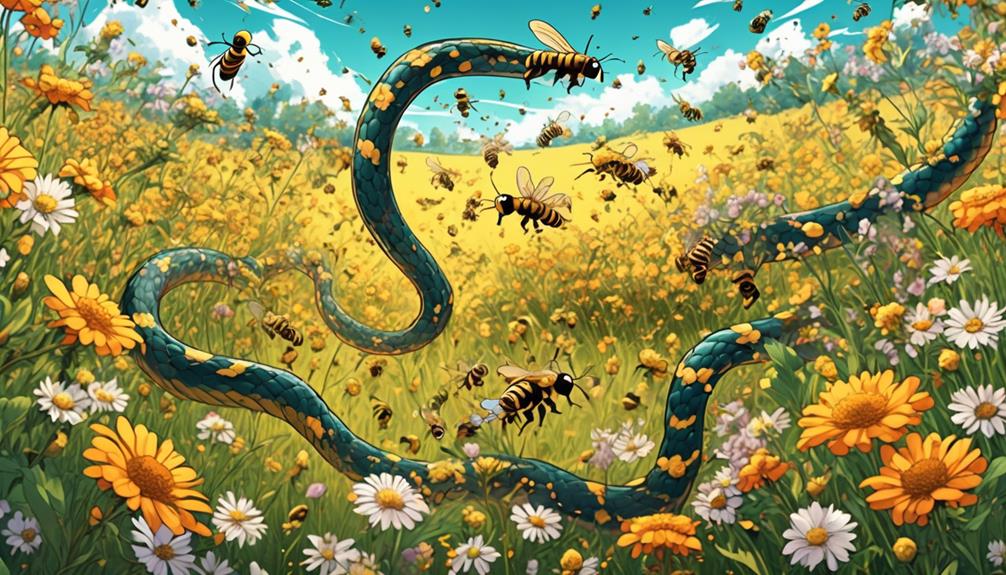
Can Bees Kill a Snake?
You've seen bees in your garden, buzzing from flower to flower. You've seen snakes slithering in the grass, intent on their prey.
But have you ever considered if these two creatures, so different in size and nature, could engage in a deadly battle? This might sound like a plot from a sci-fi movie, but it's an intriguing question grounded in the reality of nature's dynamics.
Let's explore the potential of such an encounter, and whether the tiny, buzzing insect could actually deliver a fatal blow to the cold-blooded reptile. Brace yourself, we're about to navigate some uncharted territories of the natural world.
Key Takeaways
- Bees have venomous stingers and swarm intelligence, using venomous stings and swarm attacks as their primary defense mechanisms.
- Snakes retreat and use their flexibility, speed, and forked tongues to evade bee attacks.
- Certain snake species have developed resistance to bee venom.
- The outcome of interactions between bees and snakes depends on species, perceived threat level, and resilience to bee venom.
Understanding Bees and Snakes

To fully comprehend the interactions between bees and snakes, you must delve into the biology, behavior, and environmental adaptations of these fascinating creatures.
Let's start with bees. They're not just honey-making marvels. These insects are equipped with venomous stingers and swarm intelligence, used primarily for defense. When they perceive a threat, they release pheromones that attract other bees to join the attack.
On the other hand, snakes are cold-blooded reptiles with unique characteristics. Some species are venomous, armed with fangs to deliver a deadly bite. They're agile, stealthy, and adaptive, capable of surviving in various environments. Most snakes avoid confrontation unless provoked, and would rather escape than engage in a fight.
The interaction between these two depends largely on the species and circumstances. Some snakes feed on bees, but this doesn't mean they're immune to their venom. Conversely, while bees can swarm a snake, their stings mightn't penetrate the reptile's thick scales.
It's a complex relationship influenced by many factors, including environmental conditions, individual behaviors, and species-specific traits. Understanding these intricacies is vital to appreciating their enigmatic interactions.
Bee Defense Mechanisms
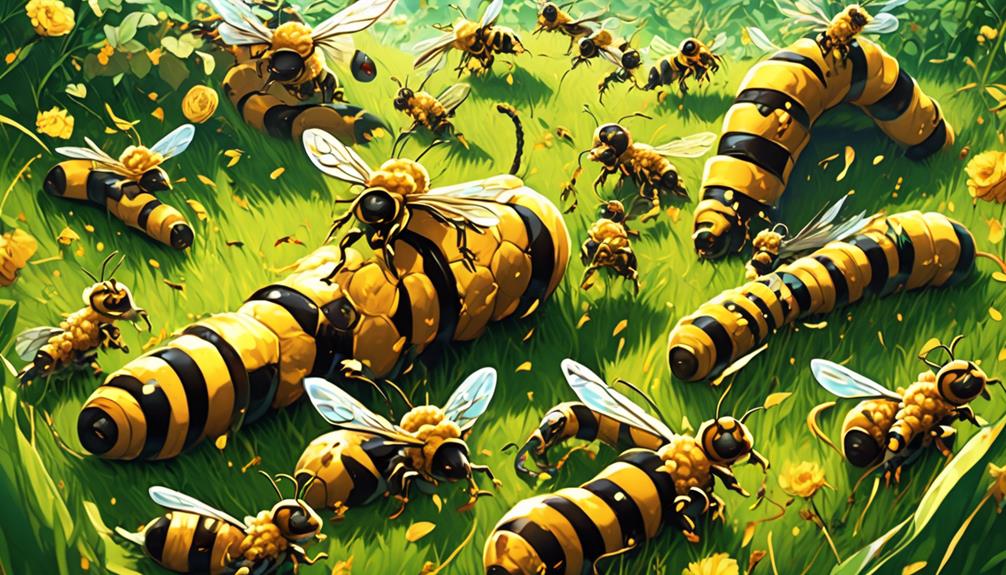
When you consider bee defense mechanisms, it's crucial to understand that these insects employ a multifaceted strategy including venomous stings, swarm attacks, and alarm pheromones.
The sting, their primary weapon, delivers a potent cocktail of peptides and enzymes, notably melittin, causing severe pain and potentially death in small creatures. It's a sacrificial act since the bee doesn't survive the process.
Swarm attacks are another strategic defense. You might've seen bees swarming an intruder, a sight that's a testament to their collective strength and unity. Through sheer numbers, bees can overpower large predators, including snakes. This isn't a wasteful strategy either; bees don't sting unless they're sure it's necessary.
Lastly, let's discuss alarm pheromones. When a bee stings, it doesn't just harm the predator, it also releases pheromones that alert other bees to danger. It's like a distress signal, indicating the need for backup. This ensures that even if the initial defender falls, others will carry on the fight.
Each of these mechanisms is effective on its own, but when combined, they form an impressive defense system that deters most predators, irrespective of their size or strength.
Snake Response to Bee Attacks

Understanding how snakes react to these bee defense strategies can shed light on the survival dynamics between these two species. When you observe snakes under attack by bees, you'll notice they employ several defensive mechanisms. In response to the bees' aggressive stinging, snakes typically retreat to seek shelter. Their scales, though providing some protection, don't entirely shield them from bee stings.
In contrast to bees' coordinated attack, snakes are solitary creatures. They lack the numerical advantage and the group strategy bees have. You might think this leaves them vulnerable, but snakes have evolved to employ other survival strategies. They use their flexibility and speed to evade bee attacks. Their forked tongues help them sense the direction of the threat, enabling a swift retreat.
Moreover, certain snake species exhibit a resistance to bee venom. This venom tolerance is an adaptive response developed over generations of evolutionary pressure. Consequently, while bee attacks can definitely harm snakes, they aren't typically lethal.
Case Studies: Bees Vs Snakes

Delving into specific instances of bee-snake encounters, you'll find fascinating examples that illustrate the complex dynamics of their interaction.
In one documented case, a European honey bee colony was observed attacking a green pit viper. The bees swarmed the snake, stinging its eyes and mouth. This persistent onslaught led to the snake's retreat, showcasing the bees' defensive capabilities.
In a contrasting case, a black mamba, known for its aggressiveness and venom potency, preyed upon a small bee colony. Despite the bees' valiant effort, the snake's thick scales and rapid strikes proved too formidable. This case underscores the variability in outcomes depending on snake species and their resilience to bee venom.
Lastly, consider a case involving Africanized honey bees, colloquially known as 'killer bees'. A rattlesnake, encroaching on a hive, was met with a frenzied attack. The bees' relentless stinging incapacitated the snake, leading to its death within hours. This encounter highlights the lethal potential of bees when their hive is threatened.
These case studies reveal the complexity of bee-snake interactions, influenced by the species involved, the bees' perceived threat level, and the snake's resilience to bee venom.
The Role of Bee Venom
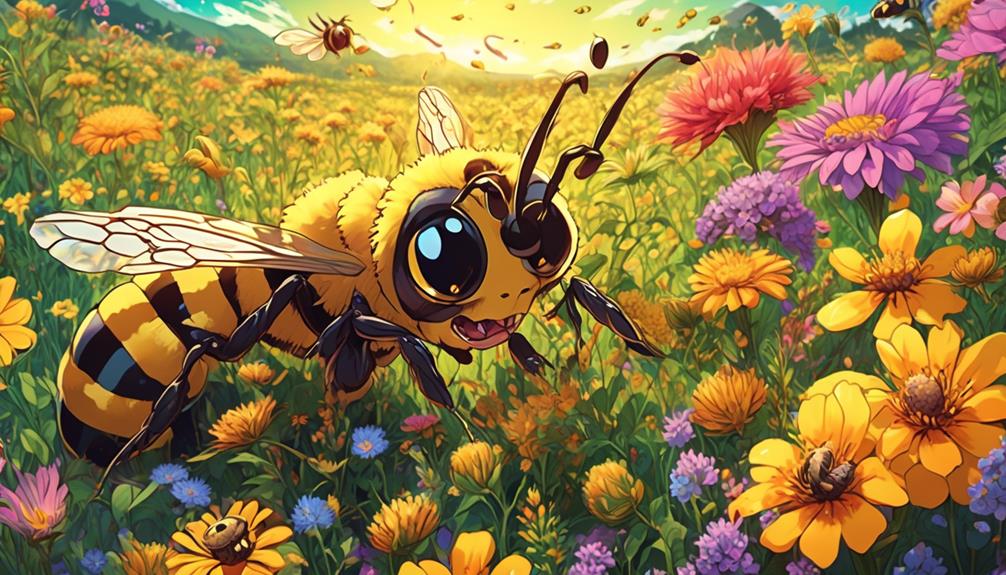
Drawing from these intriguing encounters, it's clear that bee venom plays a crucial role in these interspecies interactions. The venom, a complex compound containing proteins, peptides, and enzymes, acts as a potent weapon in a bee's arsenal. It's this venom that, when injected in large amounts, can pose a threat even to creatures as formidable as snakes.
You might wonder how this works. One key component of bee venom is melittin, a peptide that disrupts cell membranes, leading to cell lysis or rupture. In simpler terms, it's like popping a balloon. This can cause direct harm to the snake's tissues. Furthermore, bee venom contains enzymes like phospholipase A2, which can cause tissue inflammation and damage, exacerbating the effects of melittin.
However, the efficacy of bee venom against snakes doesn't solely rely on these components. It's also about the sheer number of stings a snake receives. A single bee sting mightn't significantly harm a snake, but hundreds or thousands could potentially be lethal.
Implications for Ecosystem Balance

Balancing ecosystems hinges on intricate dynamics, such as the interplay between bees and snakes, which, despite appearing unlikely, has profound implications.
Bees, as primary pollinators, play a crucial role in plant propagation. They're responsible for maintaining biodiversity by ensuring the survival and proliferation of various plant species.
Snakes, on the other hand, control rodent populations, preventing overgrazing and promoting plant growth.
When you alter these dynamics, such as through bees' ability to kill snakes, the balance can teeter. Too few snakes might lead to an overgrowth of rodents, which could decimate plant populations, subsequently affecting the bees' food sources. Conversely, too many snakes could lead to a decline in rodent populations, affecting the snakes' food source and leading to potential starvation.
In the long run, it's a domino effect that can ripple through an ecosystem, leading to severe consequences. The balance of predator and prey, pollinator and plant, is delicate. Any disruption can have far-reaching implications, not just for bees and snakes, but for the entire ecosystem.
Frequently Asked Questions
What Other Predators Do Bees Typically Have to Defend Against Besides Snakes?
Aside from snakes, bees have to defend against a variety of predators. Birds, such as bee-eaters and honey buzzards, are fond of bees.
Mammals, like bears and raccoons, are attracted to their honey. Insects, like wasps, hornets, and other bees, can also pose a threat.
Even spiders can capture bees in their webs.
Humans pose the biggest threat, exploiting bees for honey and wax, and often destroying their habitats.
How Do Snake Species Differ in Their Response to Bee Attacks?
You'd find that snake species react differently to bee attacks.
Some snakes, like the Honey Badger, are immune to bee stings and will shrug them off.
Others, like the common garter snake, are sensitive and will try to escape.
The snake's skin thickness, its resistance to venom, and its behavior during a bee attack all play a role.
It's a complex interaction, really, and one that's fascinating to observe.
Are There Any Known Instances of Bees Attacking Snakes Unprovoked?
Yes, there are instances of bees attacking snakes without provocation. It's not common, but in cases where a snake gets too close to a hive or a swarm, bees will defend their colony.
It's important to note that the snake's size, species, and ability to endure the bee venom can determine the outcome of such encounters. So, while bees don't typically seek out snakes, they won't hesitate to attack if they feel threatened.
Can Bee Venom Have Any Potential Medicinal Benefits for Humans?
Absolutely, bee venom can have medicinal benefits for you. It's been used in traditional medicine for centuries.
It contains compounds like melittin and apamin, which have anti-inflammatory and pain-relieving properties. Some studies even suggest it can help fight against certain types of cancer and arthritis.
However, it's essential to remember that bee venom can also cause severe allergic reactions in some people, so it should be used under medical supervision.
How Does Climate Change Affect the Interaction Between Bees and Snakes?
Climate change can drastically alter the interaction between bees and snakes. Rising temperatures can disrupt bees' natural patterns, leading to changes in pollination and honey production. This can affect snakes' food chain indirectly. Snakes may also face habitat loss due to extreme weather events, pushing them closer to bee territories.
However, it's crucial to remember that each species' response to climate change can vary, making predictions complex.
Conclusion
So, can bees kill a snake? Absolutely.
Bee swarms can overpower snakes through sheer numbers, stinging the snake repeatedly. The bee venom then takes its toll, potentially leading to the snake's demise.
This unusual interaction showcases the power of collective defense and the potency of bee venom.
However, it's important to remember that this dynamic is part of a complex ecosystem balance, where each creature plays a crucial part.

